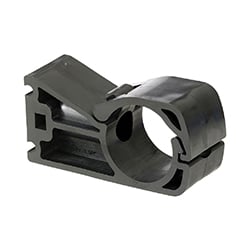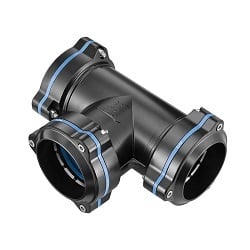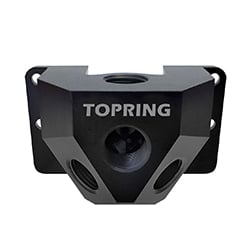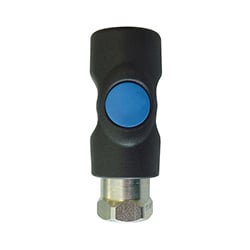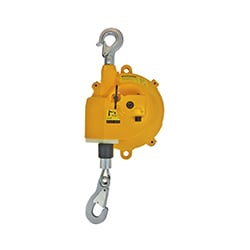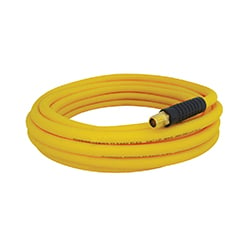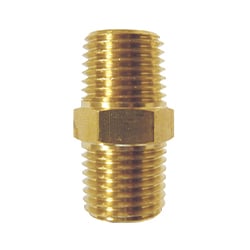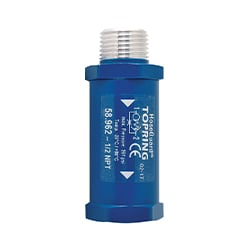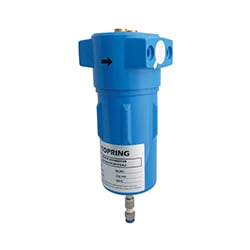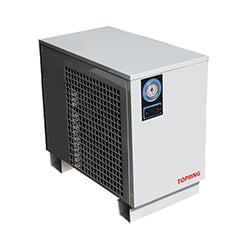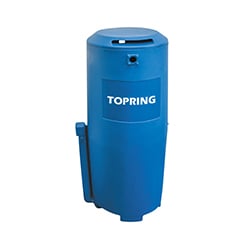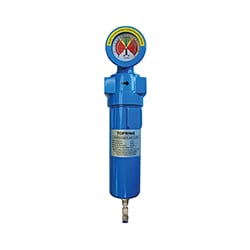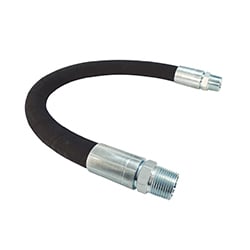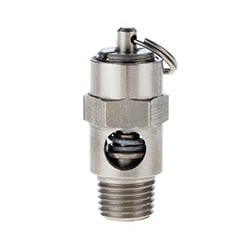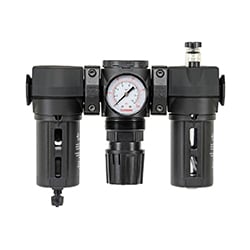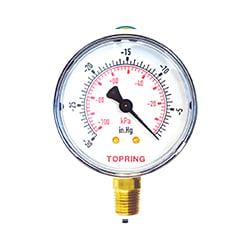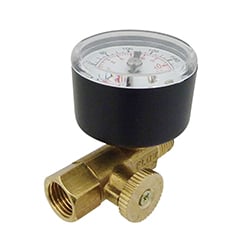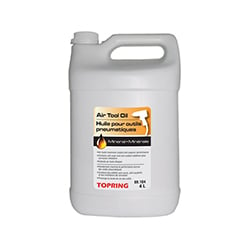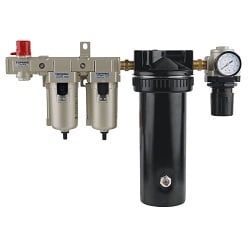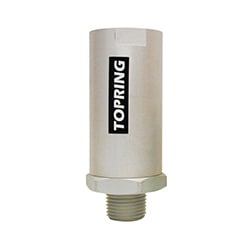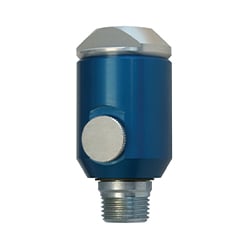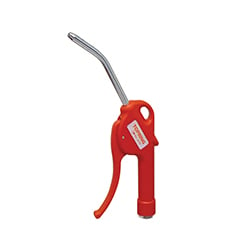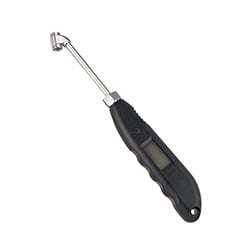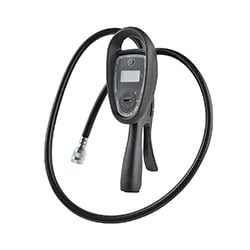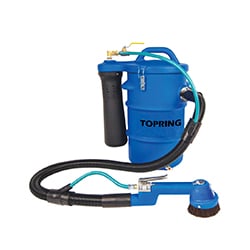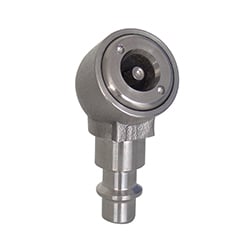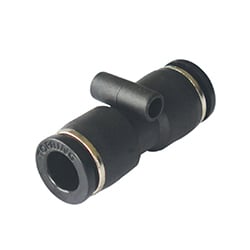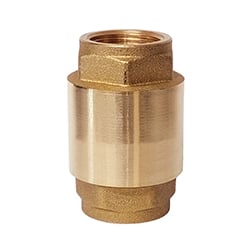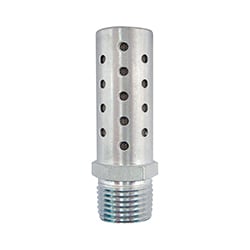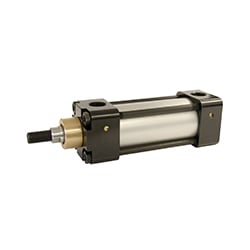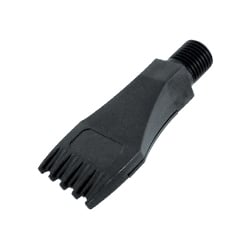Do you know the differences between one connection and another? These differences can make a big difference in:
- the quality of your work
- the performance of your tool
- or even your safety
A better understanding of the differences will allow you to appreciate quick couplers and help you to make a more informed choice. Here are the elements in which the various available models differ.
Connection
The first thing to consider is that the connection must be solid! Ask yourself the question, when the connection is, for example, subject to strong or constant vibrations will it be secure? A repetitive vibration can cause an accidental disconnection that will cause a very dangerous hose whip! At 90 PSI, during the hose whip, the “live” end is over 100 mph (160 km/h)! Be especially careful with couplers installed on hoses that are dragged on the floor. Friction, pulling, or crushing can cause accidental disconnection. In this context, choose couplers with a "button" (or pressure) release system over those with a ring-type release system. A hose extension, using a quick coupler with a button-type release system will not risk releasing when dragged, avoiding a dangerous accidental disconnection.
Air flow
If there is one important element when choosing a coupler, it is the flow rate Indeed, whether you use a high-power blowgun or a tool that's hungry for air, the flow rate does matter. When you look for information, be careful! We find anything and everything on this subject. When by miracle the flow rate is indicated, make sure to check under what conditions this information is delivered. You should always find out what the pressure and the pressure loss are, otherwise, it is impossible to compare. Much like the fuel consumption of a car, it depends on how fast and in what environment (on the highway or in the city? It's being driven. Finally, be aware that in many profiles or styles present on the market there will be several sizes that can provide the tool with its necessary compressed air requirement. Consider adapting the size of the coupler to the needs of the machine!
For example, here is a table that illustrates the maximum air flow in SCFM offered according to the profile of the plug.
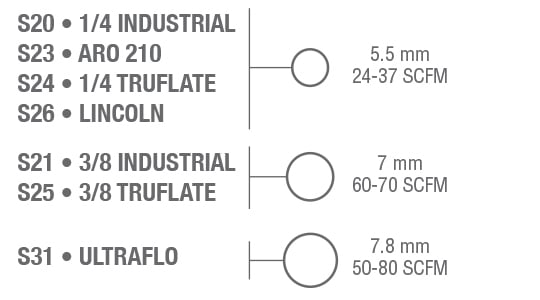
Security
Workplace accidents have always been a major concern in companies. The protection of employees is now paramount. Safety concerns have forced coupler manufacturers to adapt, and this is how safety couplers (or safe couplers) were developed. The advantage of safe quick couplers is that they allow the air in the hose to discharge while retaining the plug and without the risk of a hose whip. Today we even find some systems that automatically release the plug once the pressure is released, eliminating any danger. Not only is there a risk to people, but there are also very real risks for production or the machinery around. The cost of repairing a scratched car door because of a hose whip is significantly higher than the cost of the coupler that will prevent the accident… Think about it!
Maneuverability
This element is distinguished by many criteria, the first of which is ease of use. There are two main connection families in terms of compressed air connection:
- semi-automatic connections
- automatic connections
Semi-automatic connections
They are the oldest and least practical. Connecting a plug to the coupler requires both hands. You must pull the release ring towards you as you insert and push the plug into the coupler.
Automatic connections
They are activated with simple pressure on the end of the plug on the coupler. In general, for this system, the connection is also obvious, with the «click» making it very clear. Still in this chapter on maneuverability, we must also consider the ease of insertion. This is very clear when using a coupler without a valve spring. Originally this spring was used to firmly hold the valve closed, but new technologies have appeared over the years and today there are couplers without a spring and completely leaktight. Not a negligible advantage, because if not by introducing the end, you will have to fight against pressure and push back). This is especially important for 1/2” and larger couplers (Note: the ''fighting'' to insert the plug is mostly caused by air pressure. In Topring's Topquik SC couplers, this is avoided by Zero-pressure insertion, thanks to the design of the coupler.).
Quality of the materials
That’s something we wouldn’t necessarily think about. A lot of the couplers are made from metal. But as everyone knows, we find everything in this register! Ensure that this metal is very resistant. Concrete examples of metal strength (in ascending order) include:
- Brass (straight or nickel-plated);
- Steel (zinc-plated);
- composite
- stainless steel
The coupler remains an object that suffers all kinds of torture in the workshop and if it does not resist shocks or crushing its life will be rather short. We’ve all seen couplers that have been jammed as a result of a bump on their ring for example. With hoses dragging on the ground, the couplers will quickly suffer from external damage (vehicle passages, falls, etc.). In recent years, some new materials have appeared on the market and respond very well to this kind of treatment. This applies to composite materials from the automotive or aviation industry. These composites are both highly impact-resistant and resistant to crushing. Moreover, due to their nature, they are resistant to corrosion and much lighter. Composite couplers are very popular in workshops where work is done around fragile products (furniture, bodywork, etc.) because they do not scratch sensitive surfaces. Some of them are even antistatic, ensuring a transfer of static electricity, a characteristic very popular in paint shops for example.
Innovation
Even a product that could be considered basic or common sometimes evolves in a surprising way over time when making use of the most advanced technologies! Today, some connections allow you to quickly identify the connection profile using a color code. Others are also sometimes marked with their part number and the thread or hose diameter related thereto.
Sealing and leaks
Here’s where we’re going to talk about money! It’s especially when thinking about energy conservation that you must make the difference between price and cost!!! And it’s not the same thing at all. Some people think that high-end couplers are expensive! But when we can monetize the savings achieved by ensuring a perfect seal (even sometimes guaranteed) we quickly see the interest in investing a little more to save much more.
Let me explain, take the case of a standard connection that suffers from a very small leak, let's say a 1/64'' pinhole. It is accepted that such a leak (a very small pssss!) represents, at 95 PSI, a loss of 0.40 CFM. It’s not much, you might say, but reported over 24 hours, 7 days, then 52 weeks, the impact becomes significant!
|
Time |
Volume |
|
24 hours |
576 ft³ |
|
7 days |
4032 ft³ |
|
52 weeks |
209 664 ft³ |
We must admit that most air networks remain under pressure 24/7 all year round… This is starting to hurt! It is also accepted that the average cost of 1000 ft3 is $0.26. This brings us after very clever calculations to the result of $54.5 annual leakage cost for this single coupler! And here I’m talking about a coupler with a very small leak! How many fittings are installed on my air network? What is certain is that a new coupler will have paid for itself before the end of the first year of use! We could call that a good investment, right?
In conclusion
If there is a product that is really important in terms of easy savings and achievable tomorrow in your workshop, it is the quick coupler! You can be sure that at the same time, it’s a lot of air escaping from your wallet! This small 1/64" leak under 95 PSI corresponds to the smallest audible leak! I’m not even talking about the biggest losses on fittings, pipes, threads, etc. So why change my couplers? Well, because it pays!
To learn more about quick couplers, see the article How to choose a quick coupler.


